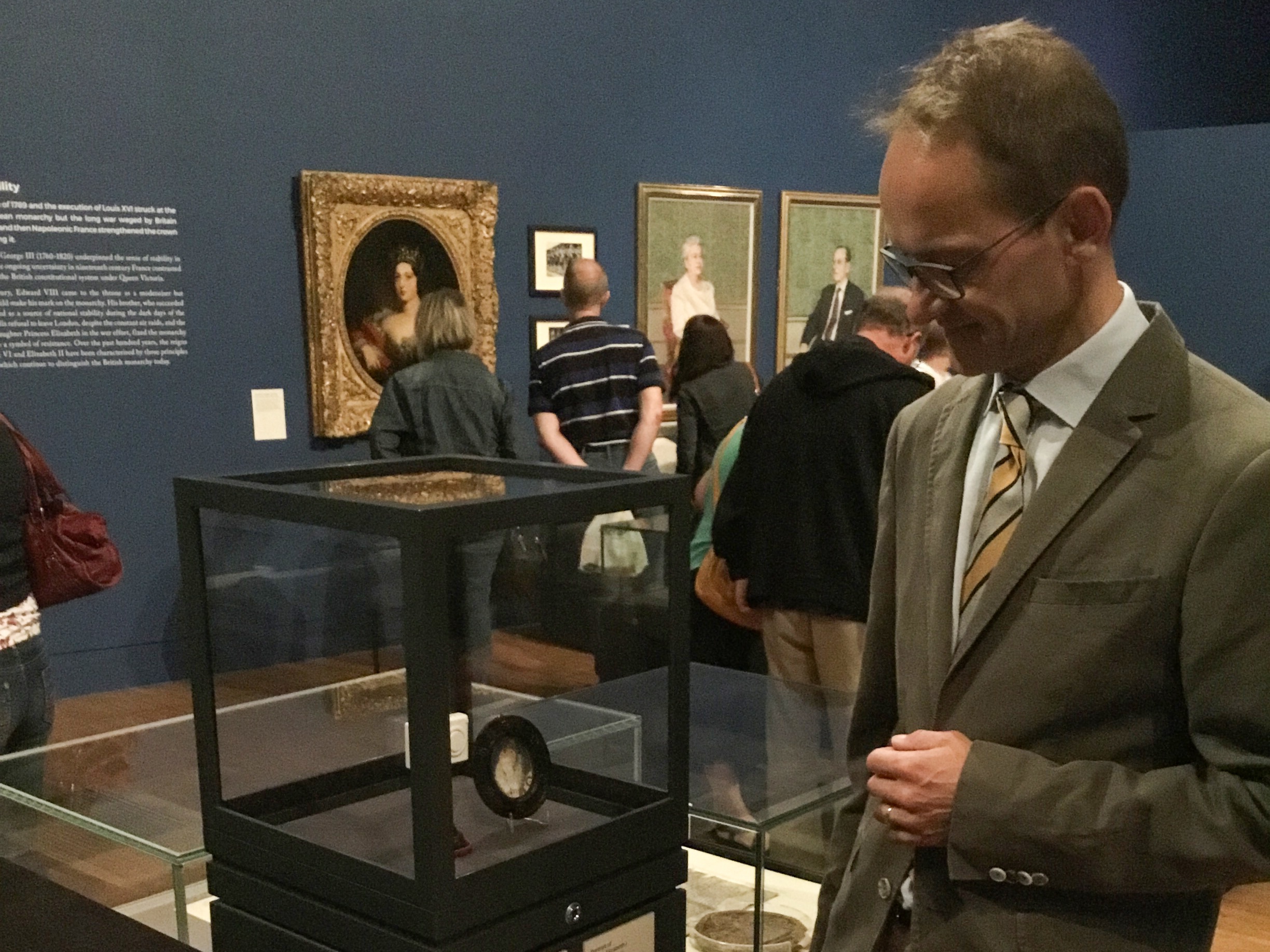By Dr Andrew Jackson, Historian, Bishop Grosseteste University
In a room in The Collection in Lincoln is to be found a quite extraordinary set of historical documents and artefacts. It is a collection of a status and importance that very few of us will have the fortune to encounter in our lifetimes.
The leading ‘curtain opener’ to the exhibition is the story of the Battle of Lincoln of 1217. Much has been said over the last few months about that bloody fight, which took place between the walls of the castle and cathedral on 20 May, 800 years ago. The tale of the conflict in that year is a complex one, but easily and compellingly followed through The Collection’s displays and artefacts.
The story of Lincoln in 1217 features its heroes and heroines, including the ‘man of the hour’, William Marshall, and the ‘woman of the hour’, Nichola de la Haye, Constable of Lincoln Castle.
It is an episode that has passed quietly into history, just one of those many events, if a slightly more fraught one, that are a part of the chronicle of the life of the nation.
The Battle of Lincoln, for political significance, was the most important military encounter after the Battle of Hastings, two hundred years earlier. If the French and their English allies had won in 1217, then that year would undoubtedly have found equal place in our popular historical memory alongside 1066.
Few contests rival its importance and impact in later times: Bosworth and Naseby perhaps; the Boyne or Culloden; and then, of course, the combat that took place in the skies above our heads through the long and critical summer of 1940.
After the account of the Battle of Lincoln, the exhibition charts the stories of Royal and aristocratic dynasties, and how they intertwine along with battles and other celebrated or notorious events through our history.
Some of the documents are especially poignant. There is Henry VIII’s letter to the people of Lincolnshire in 1536, describing them as ‘rude’, and the county as the ‘most brute and beestelie of the hole realme’.
There are the documents that, respectively, condemned Catherine Howard and Mary Queen of Scots to the executioner’s block.
There is a letter to Charles II on ‘that monster Cromwell’, who ‘everie night…drinks himself drunke to sleep and forgets his fears’.
The twentieth century is arrived at finally; and, from that time, can be read one of the most shock-reverberating announcements in our past: ‘After long and anxious consideration, I have determined to renounce the throne to which I succeeded on the death of My father, and I am now communicating this, My final and irrevocable decision’. So concluded Edward VIII, in his letter of abdication of 10 December 1936.
Whatever your historical interests, it is a collection that will leave you rather weak at the knees. Faced by such documents, even the most sceptical will find it hard not to feel moved, and share some sense of wonder at the marvellous, if often messy, history that is Britain’s.
If what is to be encountered at The Collection is not high enough in significance, then at the Castle there are also to be viewed the Magna Carta and the Charter of the Forest, alongside the Domesday Book.
Across city museums are at present some of the most precious and exceptional documents in our history. Each one you may have the opportunity to view just once in your life. To see them here together in small groups, and even more so as a whole gathering, is an experience that will never happen again in our lifetimes.
>Bishop Grosseteste University is a sponsor of the Battles and Dynasties Exhibition. The exhibition lasts until 3 September 2017.

Dr Andrew Jackson admiring a miniature portrait of Queen Elizabeth I from the Portland Collection
Previous Article
TV Presenter to be Honoured at BGU Graduation Ceremony
Next Article
Graduation Beckons for Mum Who Went Back to School
Related Posts

Celebrating volunteers at the Ermine Library and Community Hub

Association of Employment and Learning Providers visits campus

Greater Lincolnshire Social Economy Academy Programme renewed for 2025/26

BGU Lecturers contribute chapters to ‘The Guide to LGBTQ+ Research’

Celebrating academic writing podcast shared by BGU colleagues

Student and Lincolnshire binman self-publishes first book detailing newfound purpose despite difficult beginnings
